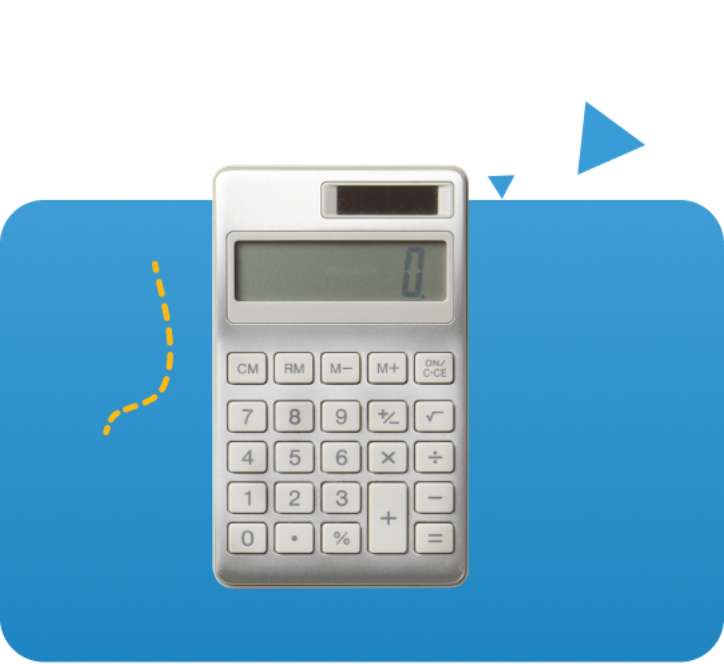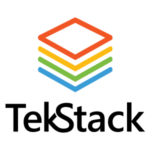What is Revenue Operations?
Revenue operations (RevOps) aligns the processes, tools, and teams involved in generating revenue within a company. It brings together different functions, such as sales, marketing, customer success, and finance, to work collaboratively towards achieving revenue goals
RevOps can break down any silos that exist across teams and fosters cross-functional collaboration to drive revenue growth, improve operational efficiency, and enhance the customer experience. The primary focus of revenue operations is to streamline and improve the end-to-end revenue generation process, from lead generation and customer acquisition to retention and expansion. It involves data, technology, and analytics to gain insights into customer behavior, optimize sales and marketing strategies, and maximize revenue potential.
Why is Revenue Operations important to B2B Tech companies?
As capital becomes tighter and more expensive, B2B tech companies need to shift focus to profitable growth versus growth at all costs. A conscious approach to RevOps will be beneficial to achieving profitable growth. Most companies can improve operational efficiencies in all areas of the business.
With good RevOps, these improvements add up to a significant impact. Things like finding more deals by exploiting successful channels, improving win rates through better sales execution, getting customers live faster with less effort, programmatic approach to managing upsells and cross-sells, supporting customers better, automating renewals. There are 100s of things departments do every day that can be improved through better information, and better processes.
How is RevOps in B2B Tech different from other industries?
SaaS companies have to deal with a few different factors:
- Customer Acquisition takes a long time and a lot of money. Even efficient technology businesses spend as much money to add a new customer as the revenue associated from that new customer in the first year. So there needs to be extra focus on Sales Efficiency and Profitable Growth, otherwise companies can run out of cash, or need to raise more money which dilutes existing shareholders.
- Tech isn’t as sticky as it used to be. There was a time where selling a new software deal locked in a customer for a long time. Not any more. Customers can jump at the end of their term with much lower switch costs. This in part because the revenue model is deferred over time, but also because there is so much competition, and value may not be realized with some products. That means companies need to spend as much energy with existing customers as they spent finding them in the first place. Often these motions aren’t as mature for software companies.
- Recurring Revenue is tricky to manage. From a transaction perspective, recurring revenue booked is not recognized revenue. There is a deferred revenue schedule unlike selling a t-shirt, a company can recognize that revenue all at once. With SaaS, new sales are deferred revenue. This creates a vacuum between the system recording the sale (CRM), and accounting which generates financial statements.
When do I need to worry about RevOps?
You’ve already made RevOps investments. If you have any tools such as CRM, or any processes (manual or automated) such as billing; then you are already on your way. But companies that reach a certain point should become more conscious of their revenue operations processes. Our recommendation is to start as soon as you have reached Product-Market Fit. The guideline for this can be indicators such as:
- $1M in ARR revenue
- First seller is hired and firing on all cylinders
- Founder can no longer keep track of every opportunity and every customer
- Need to grow without any additional funding, or, need to get additional funding to grow.
Having a disciplined approach to revenue operations also signals to new investors or acquiring companies that you are sophisticated operators and have a handle on the business.
How does software enable better Revenue Operations?
Software tools like Marketing Automation, CRM, Professional Services Automation, Help Desk ticketing, Invoicing, and Subscription Management can provide employees with access to critical information that can be used in making decisions, and can help support business processes to speed up repetitive processes and encourage best practices. These tools also provide governance and oversight for management who might be spread thin across large teams.
Why should CEOs care about RevOps?
CEOs want to increase the value of their companies. For B2B technology companies, this value is driven by three factors;
- ARR Run Rate. How much recurring revenue is in the business.
- ARR Growth. How quickly is the company growing its ARR?
- Is the company operating profitably, or at least growing quickly enough that the negative profitability will be eventually offset by growth before the company runs out of money.
As capital becomes tighter, companies can’t rely on low cost, easily accessed capital. Revenue Operations can help improve a company’s profitable growth through better operations and eliminating revenue leaks in the business.
How does RevOps impact the Chief Revenue Officer?
Revenue Operations will provide a full view of the revenue funnel across the entire customer journey. This includes visibility on top-of-funnel marketing conversion, new customer funnel, existing customer funnel, services invoicing, and customer renewals. You should be able to see which channels are best producing relative to your investment.
RevOps will also support good decision making. Sales managers need to make decisions on where to apply limited sales and marketing investments. A platform should help support intuition. Funnels will grow when sellers can double down on high fit segments.
RevOps will provide insights and tools to better coach sellers. Sales managers need to show sellers where they are performing, and where they may require assistance. This is difficult if teams are remote, or a manager has a large team. Win rates will improve as sellers apply best practice playbooks.
RevOps will improve sales forecasting. Reliable sales forecasts act as a predictor to future revenue which can impact bank covenants, or hiring decisions. B2B technology deals are notoriously difficult to forecast given the limited number of transactions, their longer sales cycles and lower win rates. Easy access to trusted data, providing insights into each deal so a sales manager can reliably present a conservative and aggressive forecast that the finance team can trust for their projections.
Why should CFOs care about RevOps?
Operations gives CFOs, who have an important fiduciary responsibility to their board and shareholders, with access to leading indicators and early stage processes that ultimately impact a company’s finances. This is important given the strategic role that finance has in B2B SaaS. This way, CFOs can help influence the future results of the company by looking at predictive indicators. Especially ones related to sales and marketing which represent a significant operating cost to the business.
How can RevOps improve services team delivery?
For some companies who generate revenue through the delivery of services, this revenue generates critical cash flow. Tracking this services revenue accurately is important. Many teams lose up to 5-10% of a project resource’s time through poor billing or time entry processes.
Services teams are also a critical part of getting a customer to realize value in their investment sooner. Getting a customer live as quickly as possible will put less risk on the renewal, and also make it easier for sellers to position upsell or cross sell opportunities.
Another way services teams can impact revenue is by eliminating any bottlenecks in customer onboarding. The less effort that it takes to get a customer onboarded means less need to hire services capacity and the ability to take on more customer projects.
Finally, services teams have a big impact on customer experience. When they are successful a customer is more likely to invest further with the company.
How does RevOps plug revenue leaks?
Its common for growing B2B SaaS companies to leak revenue. Rocket ships aren’t always fuel efficient. Some common examples that could be improved with good revenue operations.
- Investing too much marketing dollars into poor performing channels because attribution metrics are unavailable or inaccurate.
- Low win rates because of poor sales consistency in execution, or focusing on the wrong market segments. Improved access to win/loss data will improve performance win rate.
- Enforcement on discounting or delayed subscription start dates. Providing more visibility on discounts and/or flex terms that might defer revenue recognition.
- Missed Services Billing. Either missing billable hours, or forgetting to invoice back ended delivery milestones. Most companies can recapture up to 12% of work performed each month.
- Missed Renewals. Is not uncommon to completely miss renewals for customers, or miss interim software upsells that should be included in the subsequent renewals.
- Invoice errors that either delay invoicing timely, or delay payment, especially with large customer enterprises.
Whats the typical technology stack for RevOps?
- CRM
- Marketing Automation
- Outbound Sequencing
- Professional Services Automation (PSA)
- Help Desk Ticketing
- Billing & Invoicing
- Subscription Management
- Customer Success
- Reporting
What are some of the features that you should look for in RevOps software?
Support for multiple demand channels. Ability manage inbound marketing demand, outbound sales prospecting, and partner channel deals all from a single system.
Integrated Customer Lifecycle. Tools that can provide value across the organization from a single source of truth, so that organizations don’t need to depend on multiple data sources across the customer lifecycle
Subscription Management. It’s the most important revenue type. Creating subscriptions for newly acquired customers, managing pricing, billing, and renewals from a single source. Handling multi-year subscriptions, tracking co-termed orders when an existing customer upsells mid-term.
Software and Services Invoicing. Generating software invoices based on deferred subscription starts, various invoice terms like monthly, quarterly, annually. Generating services invoices based on approved time entries, or billing milestones.
Tracking Customer Lifetime Value. Easily identify a customer’s annual recurring revenue (ARR) investment with you, but also what the lifetime value of that customer is over the years they remain with you.
Integration to other productivity tools. Your team use a many number of tools today such as email, document management, team collaboration like Slack, or Teams; and other tools to do their job. Your revenue operations platform should seamlessly support these tools.
Reporting. Providing key industry metrics like funnel conversion, Win Rate, ARR Run Rate, Net Retention Rate, Gross Retention Rate visually. Providing users with access to data securely, and ensuring that data has integrity and does not require offline manipulation.
Data Security. These platforms hold sensitive customer information. In an industry that deals with higher employee turnover; the process for onboarding and offboarding should be integrated to a single security model, with one that is easy to manage access by role and level.
How does TekStack compare to HubSpot for RevOps?
- TekStack is based on Microsoft. So if your company uses tools like Teams and Outlook, the integration to your existing tools is so much deeper. So is your data security.
- TekStack supports B2B buyer journeys. Our software s built for account-centric processes which better support targeted account or account based marketing strategies.
- TekStack integrates quoting, invoicing, and subscription management without the need to buy additional tools.
- TekStack includes software tools to manage customer onboarding or professional services. We are talking about project management, assigning resources, tracking resources, time entry, billing resource time; all that stuff.
- TekStack supports infinite customization.
- TekStack has awesome reporting metrics for B2B tech right out of the box using Power BI.
- TekStack is way cheaper. By the time you license up for all the users and contacts, and buy all the other products that HubSpot doesnt include, you’ll end up spending 3-4X.
- TekStack provides direct support and managed services. Only one vendor to deal with, no need for an integration partner if you need additional support services.
How does TekStack compare to Salesforce?
- TekStack is based on Microsoft. So if your company uses tools like Teams and Outlook, the integration to your existing tools is so much deeper. So is your data security.
- TekStack supports B2B buyer journeys. Our software s built for account-centric processes which better support targeted account or account based marketing strategies.
- TekStack integrates quoting, invoicing, and subscription management without the need to buy additional tools like Salesforce CPQ.
- TekStack has all customer data in one database. With Salesforce, you’ll need Pardot or Adobe Marketo; both of which are completely different databases.
- TekStack includes software tools to manage customer onboarding or professional services. We are talking about project management, assigning resources, tracking resources, time entry, billing resource time; all that stuff. With Salesforce, you’ll need to license Mavenlink, Kimble; or some other PSA tool.
- TekStack has awesome reporting metrics for B2B technology companies right out of the box using Power BI. No need to build custom reports on Tableau which costs 4X PowerBI.
- TekStack is way cheaper. By the time you license up for all the users and contacts, and buy all the other products that Salesforce doesn’t include, you’ll end up spending 3-4X.
- TekStack provides direct support and managed services. Only one vendor to deal with, no need for an integration partner if you need additional support services.
Get Started with these Resources

Do you have the sales velocity to hit your targets?

Maximizing Revenue through better RevOps - A 5-stage Maturity Model

How well is your company operating?
Drive your business forward with Better RevOps
If you are interested in learning how TekStack can work with you to drive more profitable operations, book a consult. We provide a no obligation assessment which will identify key areas where your business can improve its operations.



